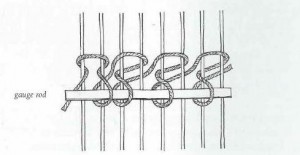Lately I have been thinking about Carpets and have found myself staring at the floor a lot more. What is it about carpets you ask that keeps my mind occupied? Well in April, the Rubin Museum of Art will be displaying Patterns of Life: The Art of Tibetan Carpets which is all about the intricate art of carpet making and how important they are to the Tibetan culture. As a resource, the museum will be exploring the technique and symbols that will allow a visitor to experience the exceptional nature of Tibetan carpets and those who create them.
In Western cultures, carpets have somewhat become an afterthought often thought of as a nice addition to fill in space. But for the Tibetan culture carpets represents something much more.
With evidence in some of the earliest translations, Tibetan carpets and its process known as pile weaving has roots dating back as early as the 11th century, describing the creation of three layers of cushions for leaders, both religious and regional, to sit upon when addressing their subjects (Cole, Dream Weavers pg. 23). This technique was perfected by future Tibetans by using vertical looms taking long hours to complete. But the creations of these carpets were not just for the wealthy. As a cultural expression, carpets were made for everyone within the Tibetan social setting.
Accented by beautiful colors, Tibetan nomads were masters at finding and shaping the art of dyes for these carpets. Using materials found in nature like, chutsa, which is the root of the rhubarb plant found in high altitudes produced a vibrant yellow dye. Other colors were discovered by the use of walnut husks, tea and logwood to emphasize the cultural expression of every social group among the Tibetan people (Tashi, Of Wool and Loom).
Along with the importance of these effervescent colors, the use of symbols became extremely important for these dream weavers. Among the technique and colors that were needed in creating these carpets, symbols also became important icons with messages and motifs similar in other Himalayan Art forms. Similar to symbols today, these symbols mean lots of various things. Sacred symbols like the Lotus Flower, the Endless Knot and the Wheel of Law are some of the most important in the Buddhist and Tibetan tradition and while these carpets do play a similar role as we know them to play (decoration and comfort) the intricate design of each gave a deeper meaning to those using them.
But with all this research on carpets and symbols answers have led to more questions. How has the art of carpet making in the Tibetan culture evolved? How is the use of symbols used today in other cultures? Do carpets like the Tibetan ones that will be here in April exist in other cultures? Can artists like those of the Tibetan culture, use natural resources for contemporary expression of art? I guess the best part of these questions is the anticipation of some answers.



